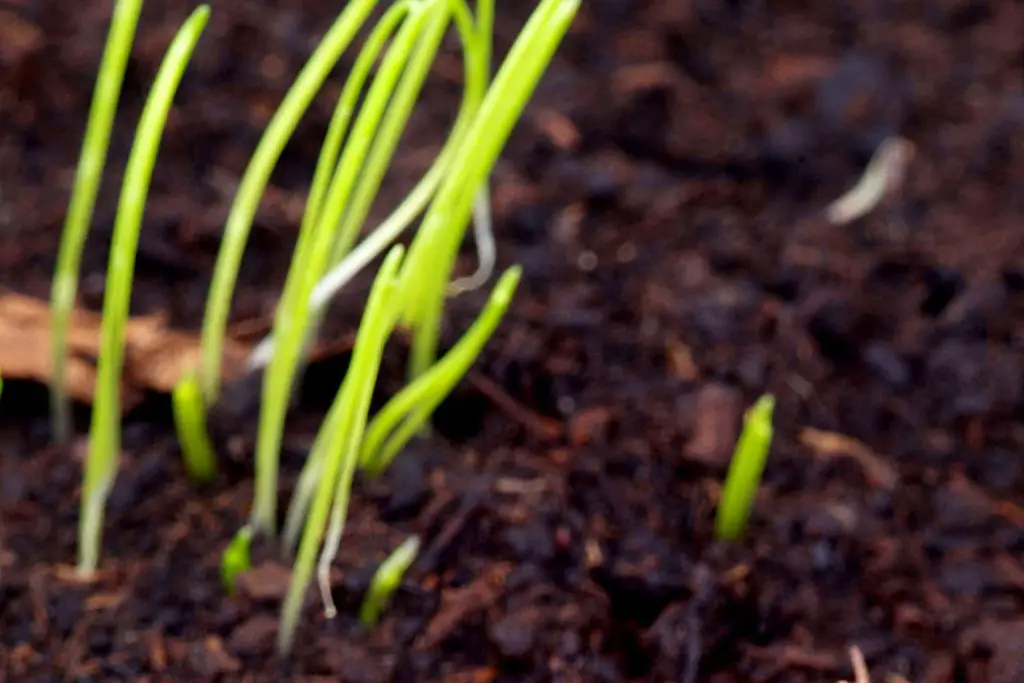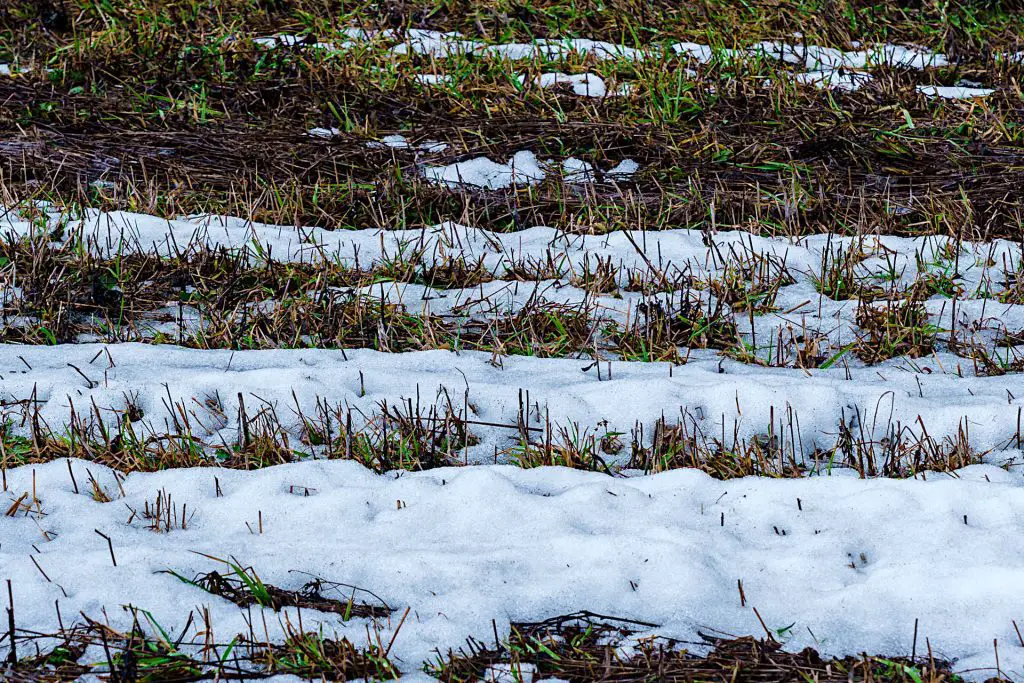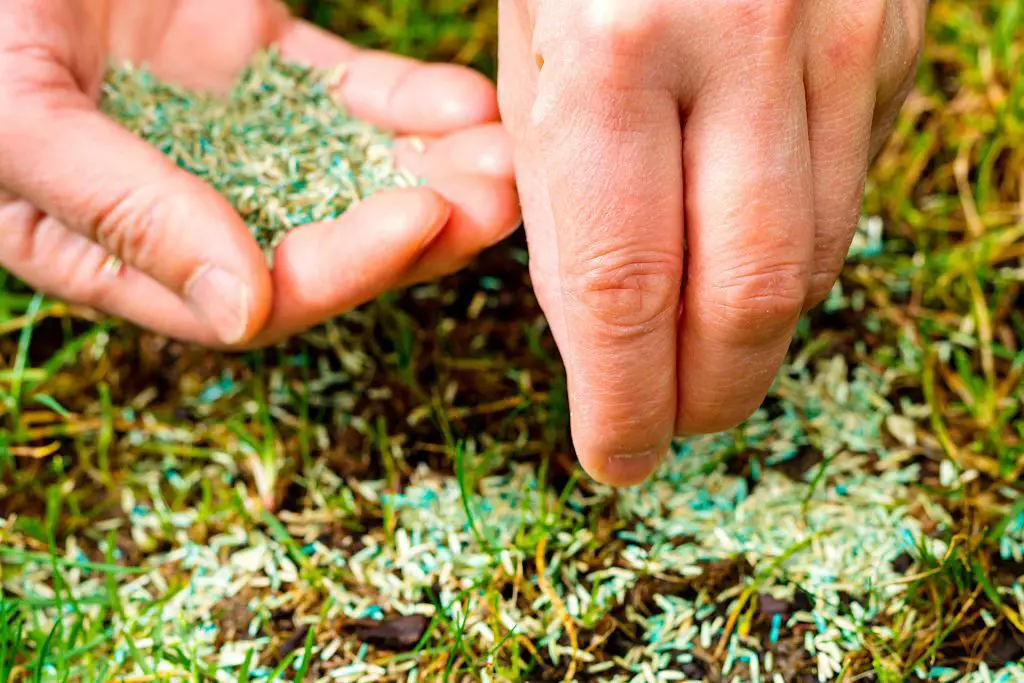How Cold is Too Cold for Planting Grass Seed?
Many gardeners look to seed or overseed their lawns in the fall. It is a good time to do so as temperatures have dropped from the heat of the summer and the ground is less firm. But as fall goes on, temperatures continue to drop to a point where it is too cold for the seeds to grow.
So, how cold is too cold for planting grass seed? There are two ways of looking at the issue and much will depend on what you want to achieve. The first is the more traditional where you want to establish the grass prior to winter, the second is the practice of dormant seeding.
If you are planting cool-season grass, the soil temperature realistically needs to be above 45°F, [1] although root growth can see some from 40°F. It should be noted that below 50°F the rate of growth decreases as temperature falls. In terms of warm-season grasses, soil temperature needs to be between 60-65°F for them to start growing.[2]
Germination Requirements

Temperature
The temperature at which it becomes too cold for the seeds to grow depends on a number of factors from soil temperature to grass types.
There are two temperatures that you need to monitor, air temperature and soil temperature. Warm soil is needed for the seed to grow so, if the daytime temperature begins to drop then the soil temperature will quickly follow suit. How warm the soil needs to be will be dependent on the type of grass.
Cool Season Grasses
If you live in the top two-thirds of the country you will be planting or have the option to plant cool-season grass. These grass types grow and thrive under more temperate climates with peak root growth coming when the soil temperature is between 50° and 65°F. Beyond this, the growth rate starts to gradually decline with growth almost stopping if the temperature is more than 85°F.
In terms of planting the best time is when the temperature is within the peak growing zone. Once it falls below 50°F the rate of growth declines but you will still see some root growth as low as 40°F. If planting in late fall or early spring you should look for a four to six-week window where the minimum soil temperature is not likely to drop below 45°F. Remember that soil temperature holds its heat longer than the air temperature.[3]
If you are worried that the temperature is going to be uncertain you should look to use a faster-growing variety of cool-season grass. Varieties, such as Perennial and annual ryegrass, both of which can germinate in as little as 7 days and will establish themselves more quickly than Kentucky bluegrass, which can take between two to four weeks to germinate.
Warm Season Grasses
If you live in the bottom third of the country you are likely to be planting or have the option to plant warm-season grass. This type of grass requires much warmer soil to germinate than cold-season varieties and is best suited to much warmer climatic conditions. Its peak growing range is when the soil temperature is between 85° and 95°F, although roots will begin to grow at around 60°F or slightly below. If the temperature is less than this then the grass becomes dormant.
In terms of planting, you can plant warm-season grass varieties when the soil temperature is likely to remain above 60°F for around the next four to six weeks. The exact time will depend upon the actual grass variety, with varieties like Centipede grass growing more slowly than Bermudagrass.
Other Requirements

But, the soil temperature is just one of several key elements that help seeds germinate and grow. Sunlight, moisture, and nutrients are also critical for grass growth.
Sunlight is necessary for the grass seed to germinate. The seed must be exposed to sunlight in order to photosynthesize and create the energy it needs to grow.
Moisture is also crucial for the seed. The seed must be kept moist in order for it to germinate and grow. If the seed is too dry, it will not be able to absorb the water it needs.
Nutrients are also important for the grass seed. The seed needs nutrients such as nitrogen, phosphorus, and potassium in order to thrive. These nutrients can be found in the soil or in fertilizer.
Finally, the importance of ground preparation cannot be overlooked. For the seed to have the best chance of germinating the soil needs to be in good condition and not compacted and there needs to be good seed-to-soil contact where the seed is planted.
Pre-Germination – Speeding Up the Germination Process
Pre-germination is a process that helps ensure that the germination process will be quicker and more even, giving you a better idea of the grass seed viability before planting. By soaking your seed in water and then allowing it to dry out, you can trigger the germination process and get a jump start on growing your lawn.
- Soak your seed in water for 24 hours.
- Drain the seed and spread it out on a clean, dry surface.
- Allow the seed to dry out in a warm environment for 48 hours.
- When you see little white sprouts coming out of the seed coat the grass seed is ready to be transplanted into your lawn!
Methods to Improve Ground Temperature
Cold weather will reduce the soil temperature. Once it falls below the optimum range the seeds will stop growing and become dormant. This can be a problem if your seeds have begun to sprout and show top growth but haven’t been growing long enough to become established.
Dangers of Frost

Grass seedlings and seeds high in moisture can be susceptible to frost. When the seedlings are yet to establish themselves, which can take up to 8 weeks or more depending on grass type and growing conditions, then they remain vulnerable to frost damage or even being killed off. Seeds containing moisture can also be vulnerable as they expand when frozen, destroying the seed shell.
Insulation
One solution is to insulate the seeded area to provide the seeds or seedlings more growing time and to protect them from the worst of the cold and freezing weather.
This can be done in a number of ways and will largely depend on the size of the area to insulate. Tarpaulins, clear plastic sheeting or even landscape fabric will help insulate the soil. Other options involve building cold frames or mulching with straw or bark.
Dormant Seeding

Dormant seeding, occasionally known as frost seeding, involves overseeding damp soil just before to the onset of colder or freezing weather. The argument is that late fall or early winter soil is frequently less hard and dry, making planting easier and increasing seed-to-soil contact. The seeds will stay dormant in the earth until the sunshine increases, the temperature rises, and spring rains begin.
The method can be used with either warm-season grass seed or cool-season seed. However, as we have mentioned above frost and disease are more dangerous to dormant grasses. This is due to the grasses’ inactivity and reduced immunity. This may make reviving dormant seeds more challenging in the spring if you have a particularly severe cold snap.
Summary: How Cold is Too Cold for Planting Grass Seed?
As we have seen, how cold is too cold to plant grass seed depends largely on the type of grass being planted and the prevailing soil temperature. In general, for cool-season grasses, it is best to plant your seed when you expect the temperature to remain around 50°F for the next four to six weeks and for warm-season grasses above 65°F
There are ways to mitigate colder temperatures and the danger of frost by pre-germinating or covering the seeded area with tarps or mulch to insulate. Of course, you may also look into dormant seeding as an alternative option if you feel it could work better or you feel you are out of time for seeds to establish themselves.
Notes:
- Pennsylvania State University, Peter Landschoot, Professor of Turfgrass Science: The Cool-Season Turfgrasses: Basic Structures, Growth and Development
- Oregon State University, Department of Crop and Soil Science: Cool-season or Warm-season Grasses
- Pennsylvania State University, Jason Reed: Soil Temperature and Seed Germination
